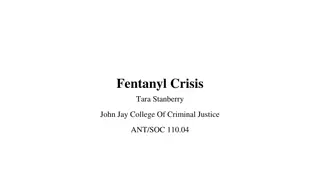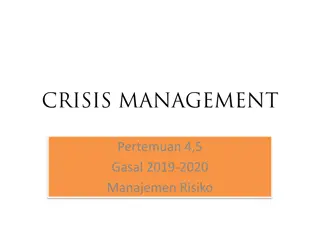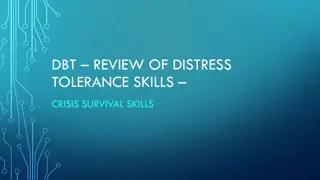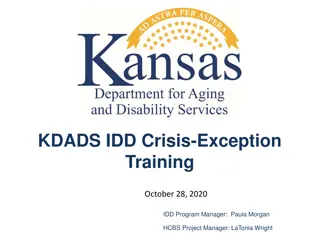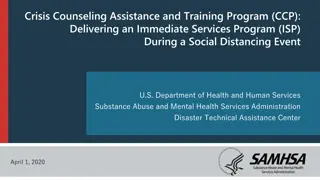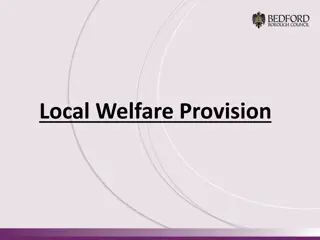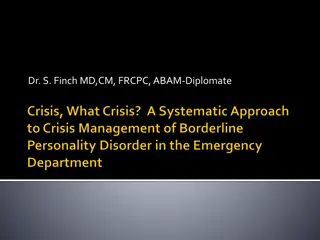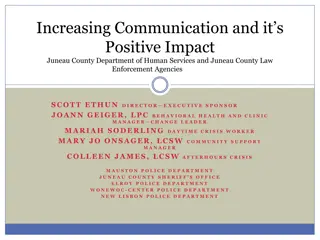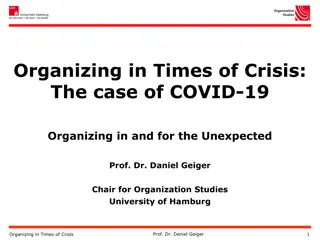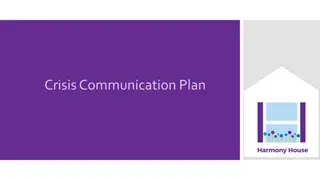School Crisis Management in the Digital Age
Addressing a school crisis involving a suicidal student through a tabletop exercise reveals the importance of adapting to technology considerations. From identifying warning signs, involving law enforcement, managing rumors, to leveraging virtual crisis rooms, the crisis team navigates challenges in a dynamic environment. The narrative underscores the need for effective crisis response strategies in the digital era.
Download Presentation

Please find below an Image/Link to download the presentation.
The content on the website is provided AS IS for your information and personal use only. It may not be sold, licensed, or shared on other websites without obtaining consent from the author.If you encounter any issues during the download, it is possible that the publisher has removed the file from their server.
You are allowed to download the files provided on this website for personal or commercial use, subject to the condition that they are used lawfully. All files are the property of their respective owners.
The content on the website is provided AS IS for your information and personal use only. It may not be sold, licensed, or shared on other websites without obtaining consent from the author.
E N D
Presentation Transcript
Tabletop Exercise : Suicidal Student (Technology Considerations) Safe and Secure School Unit
Initial impact: Two students walk into the principal s office and share that they think one of their friends is suicidal. The student of concern posted FML on a social networking website, which is computer slang for F___ my life. Since this expression could be an indication of suicidal ideation, the principal requested that school mental health staff locate the student and conduct an initial safety assessment. A call to the student s mother at work revealed that the student stayed home sick from school that day. Question What should be done to ensure the safety of this student?
First 30 minutes: A call to the student s home went unanswered, and staff are beginning to feel uneasy. A decision is made to contact the SRO or local law enforcement. Law enforcement conducts a well-being check. Upon arrival, officer discovers that the male student has died by a self-inflicted gunshot wound. Question .. What should you do next?
Two hours later: A teenage neighbor saw the county medical examiner s vehicle pull up to the house, and this information quickly spread around the school and community via student texting. Rumors are running rampant as there are few known facts, and many people are drawing their own conclusions as to what actually happened. Questions .. How will your crisis team respond? Do you have crisis team, if not who handles this in regards to your plan? How do you handle rumor control?
The next day: The school crisis team decided the night before to allow students the opportunity to gather in the library the next morning to support each other and receive counseling, if needed. The next morning the staff found, to their surprise, that only a couple students came down to the library. The students shared that no one wanted to come to the library because electronic devices were not allowed. Staff discovered that students were communicating with each other, but they were doing so primarily through texting on cell phones and posting online messages on social networking sites. The staff realized that students were not attending the traditional crisis room because they spontaneously created a virtual crisis room the night before. Question . How will your team adapt to these circumstances?
Mid-day The crisis team reconvenes for a lunch meeting briefing to make sure everyone has the same information and to formulate plans for the afternoon and coming days. At the meeting, it is discovered that another male student was making similar depressive statements online. Your school does not have established policies regarding online student communications. Some staff want to get online and communicate with students, but the school does not have a social networking account. The administration is expressing concern that online communication is outside the realm of the educational setting. Questions What decisions will your crisis team have to make in order to effectively deal with this dynamic situation? How will information be communicated and updates provided to parents and the community?
After Actions to the Response What were your Initial reactions and feelings during this response? What planning and preparation would need to be in place, prior to the incident, for this to be an exceptional crisis response? What would need to be done for the long-term recovery and how will this incident affect future crisis planning for the building? Are there any proactive measures that could be taken in the future? How about a memorial? or do you for suicide? Do you have guidelines for this type of death? What do you with memorials afterwards?
Actual Events: This scenario was created by combining a couple of actual events. In one case, a student died by suicide and the school staff found that students had essentially been grieving amongst themselves online. This presented a new and challenging situation, because students had typically come to school to talk with staff and other students. A second scenario involved a student who clearly posted statements online that were assessed to be an indication of suicidal ideation. The principal of the school went online to print out the comments that were posted and promptly called the parent of the student with the school psychologist. Both school staff and parents were able to call the student (at home sick that day) and verify that the student was safe. The mother of the student made arrangements for a family member to go over to the house to be with the student.
CONTACT US John Calvert Jim Green KCEM Director School Safety Specialist (785) 296-7056 (785) 296-4946 jcalvert@ksde.org jgreen@ksde.org Kansas State Department of Education logo and address 900 S.W. Jackson Street, Suite 102 Topeka, Kansas 66612-1212




